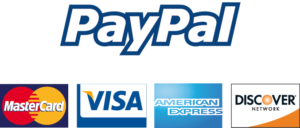
Having peace when it comes to your finances and having the ability to build wealth both come down to properly managing your money. Without inheriting a large sum of money or getting lucky enough to win the lottery, you don’t just wander into being wealthy; you have to be intentional. The two big money managing activities are to budget and to manage your cash flow. Budgeting tells your money where to go and cash flow management ensures you don’t overspend before you have the money. Think of the latter as buying that new device before your paycheck cleared. In this article, we’re just going to focus on budgeting and will touch on some tactics to avoid over-drafting your account.
Why Budget?
Have you ever gone through the month and at the end, wonder where your money went or how much you spent on fast food? To be intentional with your money, you need to tell it where to go rather than wondering where it went. Budgeting is that activity of writing down where every single dollar of your income for the month will be allocated; everyone needs a job. If you don’t give every dollar a job, you could be missing out on paying down your debt faster or saving the money.
Another reason to budget and some people usually have the opposite perception, but it actually gives you freedom and peace. People often view the budget as restrictive and prevents them from spending so they end up avoiding it altogether when in reality, the budget is giving you permission to spend. The budget will say, “go ahead and buy that $20 game” or “you can go and stop for that coffee”.
Where the budget gets restrictive is when you start overspending in categories. This is a stop-gap to help prevent you from falling into financial troubles. One slip up may not necessarily cause problems, but it’s the excessive spending and racking up the debt to pay for it that ends up causing the problems. If you’re unable to move money around in the budget, you should be asking yourself if you need it now or can you save up for it next month or when you have enough. My wife and I had those times of waiting the extra week to go grocery shopping or having to say no to eating out as the budget had dried up, come the end of the month.
I have been budgeting since my first internship in college where I decided I need to be smart with the money coming in. I have always had the approach of it’s better to manage the money I’m making and stretch it to its full potential than always worry about making more money. This has allowed us to pay off my student loans and a lot of our debts. Working with my wife on the budget allows for both of us to be aligned with our goals and keep the financial line of communication open. This is key for married couples. So, let’s start talking about how to be a pro with budgeting!
Understand it Takes Time
Before diving into the trenches of budgeting, I need to get across that there is no perfect budget and they’re never written in stone. You may write a budget on the first of the month and on the tenth had to change it; sometimes life happens. In certain cases, this is why we have an emergency fund. The last thing to note is that when beginning to budget, give yourself three or more months to get in the groove of setting a budget that works for you. This gives you time to monitor your transactions and spending habits so you are more successful on the first budget set for the month. Why give yourself time? Because budgets are dynamic and need to be written every month. You’re not always spending the same amount every month and bills change.
The Budget Starting Point
The budget is broken down into three parts:
- Essentials
- Debt
- Everything else
To start your new budget, you want to focus on the essentials first. This is the roof over your head, food, utilities, and transportation. You want to make sure you can live each month, so budget these first. The roof over your head would be your mortgage payment or your rent plus any extras such as amenities or HOA fees. Next, you can budget food as a whole or break down groceries and eating out. The more important being groceries. Budgeting utilities will focus on electric, gas, water, and sewer. Cable, internet, and mobile phones are all luxuries that are less important. Lastly is transportation. This is your car and gas or public transit costs. You need to make sure you’re able to get to work to bring home a paycheck.
After the essentials are budgeted for you’ll want to layout the debt payments. You can bundle them as “Loan Payment” and “Credit Card Debt”, or just “Debt Payment”, or you can break each individual one out as its own line item. The starting point would be the required payment and later, after the entire budget is set, expand these payments. I put debt before everything else because it does come before most things; like eating out, having a streaming service, or anything that falls in the “want” category.
Lastly, with the money left over, determine what you need in the everything else categories. These are all considered wants such as clothing, beauty supplies, home supplies, traveling, eating out, cable, internet, cell phone, etc. If you have debt, your focus should try to minimize this group so you can spend more on your debt. If you’re already debt-free, congratulations! You can spend more on everything else.
Adjust the Budget
The budget is best to do at the beginning of each and every month. Not every month you need a contractor out or your hair cut. There will be line items that come and go while many others stay a long time. As mentioned, at the beginning of budgeting, this will take time to get a good grasp of where your money is going. Budgeting is also estimating most of the time; or the upper bound of spending. You’re not always going to spend every penny in a category, or on the other side, may have to readjust if you overspend.
Have the Right Tools
There are many tools and methods that exist and you have to find the right one for you that you can be efficient and successful. Having the wrong tool could discourage you from continuing to budget. To budget like a pro you need to be looking for a tool that has the following features:
- Transaction Downloads
- Transaction & Budget Categorization
- Budget Category Rollover
The first two are more for your sanity and to maintain momentum with your budget. When using the cash envelope method, it doesn’t matter because when the money is gone, it’s gone. Some people prefer the cash envelope method because it allows you to be more hands-on, however, you are more likely to miss transactions. It’s much easier to have a tool that pulls transactions from multiple accounts and auto categorizes everything for you. You also want to choose a tool you’ll be able to manually change categories as you need. Lastly, you want the tool to support sinking funds. This is done through rollovers where whatever you don’t spend in a category it gets carried into the next month.
We use Mint.com as our budgeting tool. It is free, has an app version, and all the features listed above. My wife and I share one account and can access our budget from anywhere, anytime.
Pre-Spend Budget not Post-Spend
This section is for people who use credit cards for spending. I’ve seen people put credit card payments as budget line items when they pay their statement in full every month (I only suggest it if you actually have credit card debt, a balance you don’t pay in full). I consider this style of budgeting as post-spending; you budget to pay the following month what you bought, and are liable for, this month. The ideal form of budgeting is to budget what goes on the credit card and have each transaction take away from this month’s budget. This will help prevent over-leveraging yourself and running into potential credit card problems in the coming month.
Use Sinking Funds
As mentioned in having the right tool section, you want to use sinking funds to prepare for expenses in the coming months. Have a sinking fund for next month’s utility payments, rent or mortgage payment, or other payments you know you need to make. This is to maintain a positive cash flow and to prevent over-drafting your checking account; especially with rent or your mortgage. This is due the first of the month but you might not get paid for another week so have this come out of last month’s budget.
Another use of sinking funds would be for preparing for trips or larger purchases in a shorter term. If you pay a yearly subscription, such as Amazon Prime, you may want to have your subscription category grow for the 12 months instead of being hit with the $120 in one month. If you’re saving for a trip in 1-2 years, you may want to just budget putting the money in a savings account.
Closing Statement
Budgeting takes time to master what works for you. These are the tools and ideas that I apply to my budgeting techniques. I look at my transactions every day to ensure they’re brought in and applied to the correct budget category. This also keeps it fresh in my mind how well we’re doing and if we can keep spending or need to apply the breaks a bit.
If you have questions or would like to have help applying these ideas to your monthly budgeting, reach out, and schedule a coaching session with us today!

